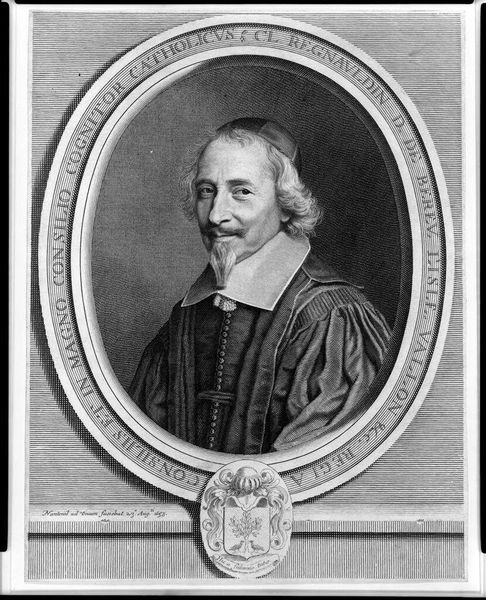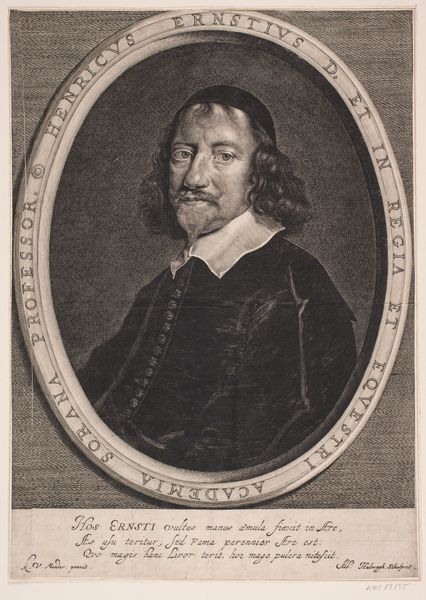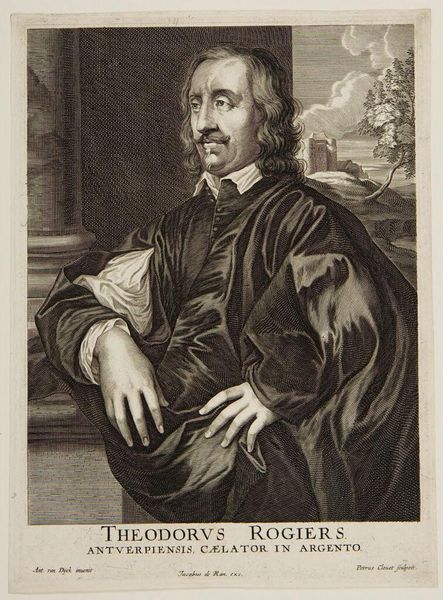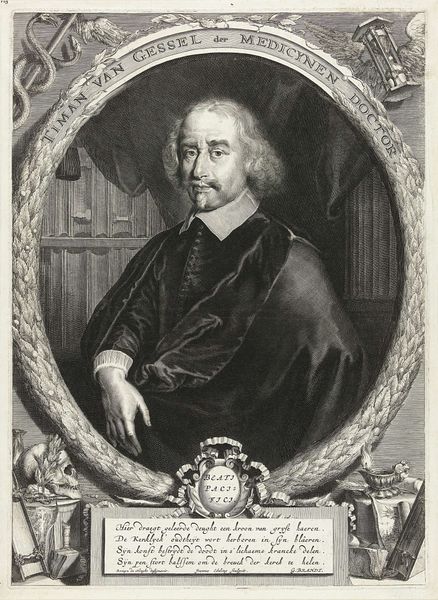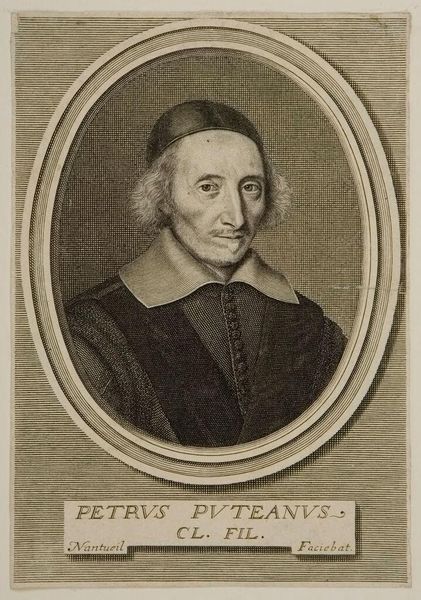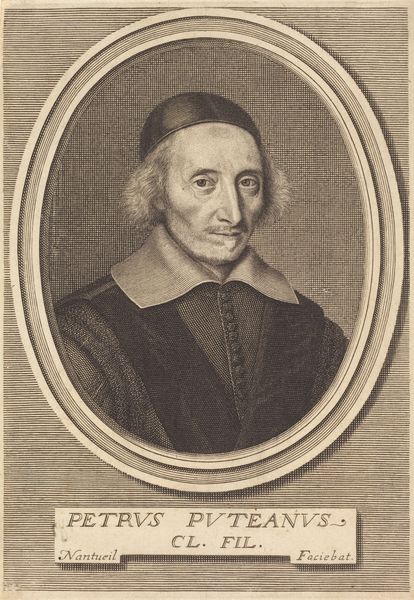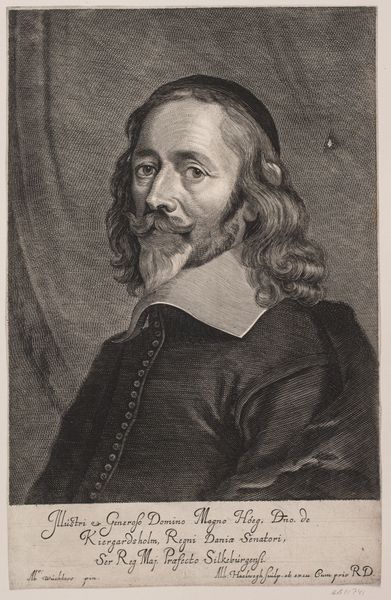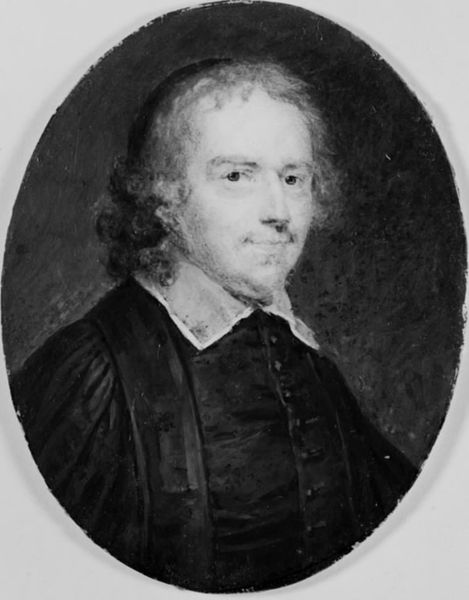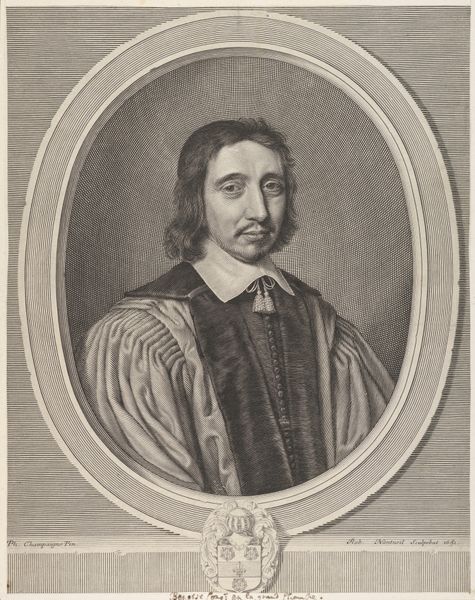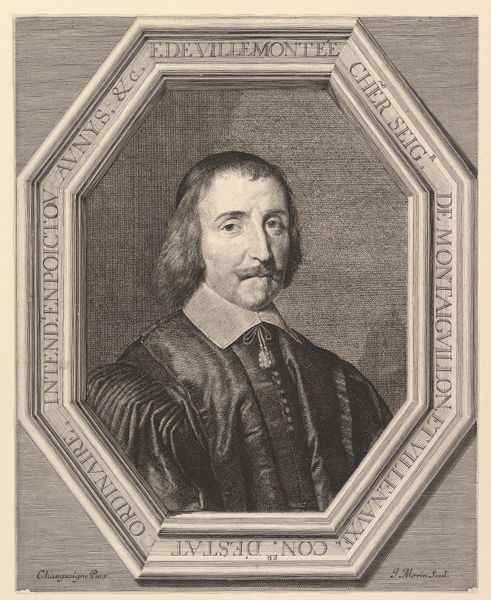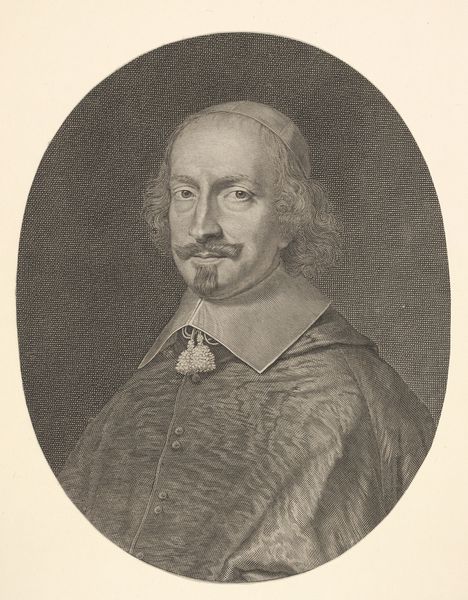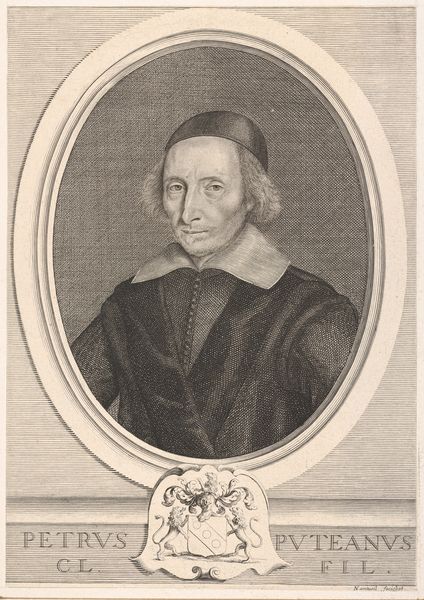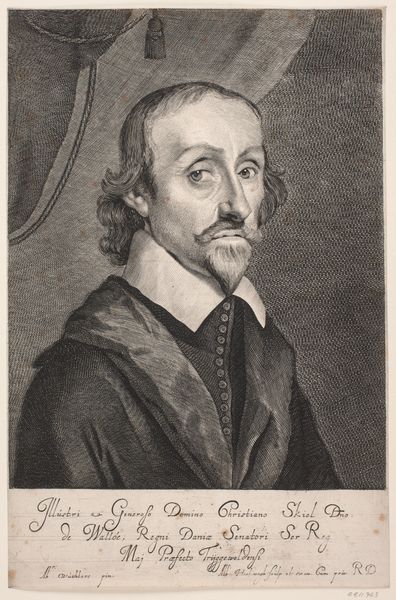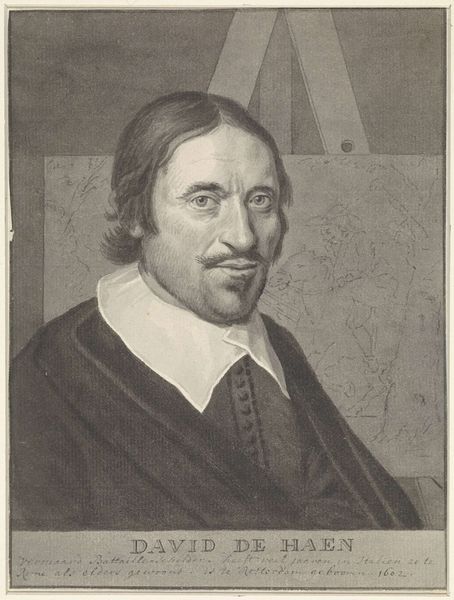
painting, oil-paint, wood
#
portrait
#
low key portrait
#
portrait image
#
dutch-golden-age
#
portrait
#
painting
#
oil-paint
#
portrait subject
#
male portrait
#
portrait reference
#
portrait head and shoulder
#
wood
#
facial portrait
#
fine art portrait
#
realism
#
digital portrait
Dimensions: 84.5 cm (height) x 66.5 cm (width) (Netto)
Editor: So here we have "Portrait of a Man" by Bartholomeus van der Helst, created in 1651. It’s oil on wood. I'm struck by the sitter’s somber gaze, but I am curious about the socio-cultural factors behind such paintings. What's your take on this, viewing it through a historical lens? Curator: Considering the Golden Age of Dutch painting, portraits weren’t just likenesses. They were powerful signifiers of social status. Notice how the man is positioned, his clothing and even his calm controlled look; what do you think this tells us about the kind of person he was and the painting’s broader role in society? Editor: It speaks to wealth and influence, perhaps suggesting a prominent role in the community. This kind of work almost feels like visual propaganda. Curator: Exactly. Dutch Golden Age portraits frequently served as visual testaments to the sitter's achievements and place within the social fabric. Commissions were often fueled by social competition within the growing merchant class. But the interesting aspect is that Dutch art from this era served a specific societal function – one of public performance and displaying status. How do you think our current artistic landscape differs? Editor: I think today's art often questions the status quo. This painting seems more like it reinforces it. Thanks! This has totally shifted how I viewed this seemingly straightforward portrait! Curator: My pleasure! Always remember that art doesn't exist in a vacuum; understanding the social context unlocks a wealth of meaning!
Comments
No comments
Be the first to comment and join the conversation on the ultimate creative platform.
